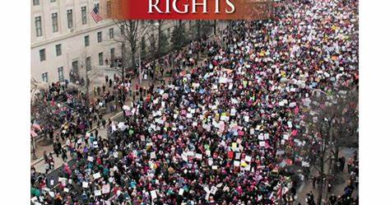Inequality of minorities in America

1. Education
We noted in 1973 that more than 558 public schools had closed permanently in three years due to desegregation. We stated in testimony given in 1991 that attempts to desegregate public schools would be hindered if schools were permitted to engage in illegal resegregation practices such as putting minorities in special education courses and lower-ability classes. In schools with high racial and economic concentrations, we saw a rise in the proportion of disadvantaged kids as recently as 2016. These schools typically have fewer resources and don’t provide advanced math, science, or courses that prepare students for college [3, 4].
2. Voting Rights
We examined how voter ID legislation affected turnout in 2014, especially among Black voters. Between the general elections of 2008 and 2012, turnout decreased the most in the states with the strictest voter ID laws. There are just 1% of African Americans or members of the African American community among the elected authorities in the country [5, 6].

3. Equal Employment
Minority employees are still not given equal opportunities to be hired and promoted by several government agencies. We discovered that Black job applicants were rejected from interviews by the Office of Personnel Management at a greater rate than White job applicants in 1979. Black applicants got less unemployment benefits than White applicants during the COVID-19 epidemic [7, 8].
4. Racial Profiling
Researchers discovered that Black persons were more likely to be pulled over while driving, to get harsher punishment, and to experience bias in the legal system. Researchers found that similar racial and ethnic inequalities in police and justice still exist in 2017. View our previous stories on law enforcement and justice [9].
5. Representation in the Census
Billons in federal funds are given to states each year based on census data. We’ve reported since the 1990s that Black and Indigenous people living on reservations are much more likely to be undercounted in the census, while White people are more likely to be overcounted. This affects how districts are drawn for local and federal elections as well as the amounts of federal funding available for programs like education, housing, and health care [10, 11].
6. Access to Capital and Housing
GAO has published many studies on the prejudice that black and other minority farm owners face in loans and federal programs. Minority borrowers sometimes face loan denials or higher interest rates than White borrowers. White borrowers continue to account for the vast majority of house loan originations, according to a recent research we conducted in 9 U.S. cities [12, 13].
7. Health Care
Studies show that Black and Indigenous women had a two to three times higher risk of dying during pregnancy than White women. Black veterans with cancer and cardiovascular diseases had worse survival rates. Regardless of variables like income and insurance coverage, minorities often receive less high-quality medical treatment than White individuals [14, 15].
8. Military
GAO has suggested that the Department of Defense enhance its collection and analysis of disparities data in a number of these areas. We discovered that African-American and Hispanic servicemembers are more likely to face general and special court-martial hearings. We discovered discrepancies in military employment and schooling in the 1990s [16-18].
References
[1] D. L. Brown, “It was a modern-day lynching’: Violent deaths reflect a brutal American legacy,” National Geographic, 2020.
[2] M. L. Cappelli, “Black Lives Matter: The emotional and racial dynamics of the George Floyd protest graffiti,” Advances in Applied Sociology, vol. 9, no. 10, p. 323, 2020.
[3] L. Darling-Hammond, “New standards and old inequalities: School reform and the education of African American students,” in Black Education: Routledge, 2006, pp. 227-254.
[4] H. G. Peske and K. Haycock, “Teaching Inequality: How Poor and Minority Students Are Shortchanged on Teacher Quality: A Report and Recommendations by the Education Trust,” Education Trust, 2006.
[5] J. Grimmer, E. Hersh, M. Meredith, J. Mummolo, and C. Nall, “Obstacles to estimating voter ID laws’ effect on turnout,” The Journal of Politics, vol. 80, no. 3, pp. 1045-1051, 2018.
[6] Z. Hajnal, N. Lajevardi, and L. Nielson, “Voter identification laws and the suppression of minority votes,” The Journal of Politics, vol. 79, no. 2, pp. 363-379, 2017.
[7] M. A. Turner, M. Fix, and R. J. Struyk, Opportunities denied, opportunities diminished: Racial discrimination in hiring. The Urban Insitute, 1991.
[8] R. D. Arvey, “Unfair discrimination in the employment interview: Legal and psychological aspects,” Psychological bulletin, vol. 86, no. 4, p. 736, 1979.
[9] A. Owusu-Bempah, “Race and policing in historical context: Dehumanization and the policing of Black people in the 21st century,” Theoretical Criminology, vol. 21, no. 1, pp. 23-34, 2017.
[10] C. M. Snipp, “Racial measurement in the American census: Past practices and implications for the future,” Annual Review of Sociology, pp. 563-588, 2003.
[11] C. J. L. Murray et al., “Eight Americas: investigating mortality disparities across races, counties, and race-counties in the United States,” PLoS medicine, vol. 3, no. 9, p. e260, 2006.
[12] L. Blanchard, B. Zhao, and J. Yinger, “Do lenders discriminate against minority and woman entrepreneurs?,” Journal of Urban Economics, vol. 63, no. 2, pp. 467-497, 2008.
[13] J. Yinger, Closed doors, opportunities lost: The continuing costs of housing discrimination. Russell Sage Foundation, 1995.
[14] M. C. Lu and B. Chen, “Racial and ethnic disparities in preterm birth: the role of stressful life events,” American journal of obstetrics and gynecology, vol. 191, no. 3, pp. 691-699, 2004.
[15] A. A. Creanga, B. T. Bateman, E. V. Kuklina, and W. M. Callaghan, “Racial and ethnic disparities in severe maternal morbidity: a multistate analysis, 2008-2010,” American journal of obstetrics and gynecology, vol. 210, no. 5, pp. 435. e1-435. e8, 2014.
[16] M. Schwartz, Department of Defense contractors in Iraq and Afghanistan: Background and analysis. DIANE Publishing, 2010.
[17] A. I. Maas et al., “Traumatic brain injury: integrated approaches to improve prevention, clinical care, and research,” The Lancet Neurology, vol. 16, no. 12, pp. 987-1048, 2017.
[18] J. Lerner, “The government as venture capitalist: The long-run effects of the SBIR program,” ed: National Bureau of Economic Research Cambridge, Mass., USA, 1996.



